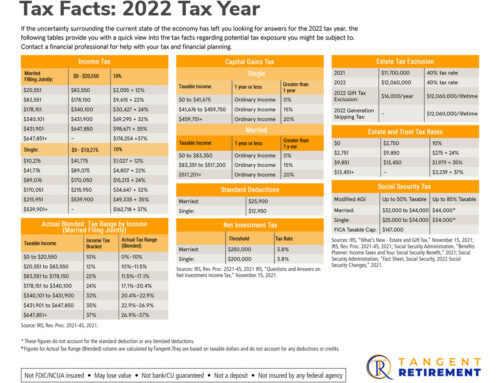 Tensions in the Russia and the Ukraine have been rising for years, and the 2022 Russian invasion of Ukraine simply mirrors Russia’s 2014 annexation of Crimea as well as its 2008 invasion of Georgia. At the same time, Russia’s current military action is raising concerns in terms of impacts on financial markets and the global economy. That’s especially visible in the short-term costs of fuel – as Russia supplies roughly 40% of the European market. In the United States, Russia, as the country’s 30th largest trading partner, is much less impactful, meaning we are much less likely to see anything but ripple effects hitting the economy.
Tensions in the Russia and the Ukraine have been rising for years, and the 2022 Russian invasion of Ukraine simply mirrors Russia’s 2014 annexation of Crimea as well as its 2008 invasion of Georgia. At the same time, Russia’s current military action is raising concerns in terms of impacts on financial markets and the global economy. That’s especially visible in the short-term costs of fuel – as Russia supplies roughly 40% of the European market. In the United States, Russia, as the country’s 30th largest trading partner, is much less impactful, meaning we are much less likely to see anything but ripple effects hitting the economy.
In addition, history shows that crises like the Russian invasion of Ukraine have only short-term impacts on the global economy. In 2014, the market recovered after just 5 days. However, that same pattern won’t necessarily repeat itself, and investors should exercise caution in order to protect assets and investments.
- Investors should expect short-term increases in market volatility
- Disruption in air shipping and Russian energy exports will contribute to increasing energy and food prices
- Adopting strategies to manage resulting geopolitical risks may be important, but may be less necessary than you might think
- Keeping an eye on inflation, especially as bonds shoot up, is crucial
Elevated Risk is Shifting Markets
Most investors can note tumbling stock values following the start of the Ukraine crisis. That was alleviated by the first Fed hike, with U.S. stocks closing 2.2% higher after the Fed raised interest, or its largest 2-day increase since April 2020. But, geopolitical volatility is also impacting other aspects of financial markets. With combined worries of Fed hikes and Ukraine-related inflation boosts, banks are putting a halt on loan sales, even relatively safe ones, with just 1.2% of loans trading at face value on the 17th of March, and many trading as much as 5% below face value.
That shift primarily impacts the cost of new debt, especially longer-term collateralized loans. With inflation risks, U.S. banks could be short as much as $40 billion in outgoing loans, and they make a poor investment for money managers until inflation goes back down.
In addition, with officials predicting raising interest rates as high as 2.8% by the end of 2023, the gap between 5 and 10 year yields continues to shrink.
Rallys Unlikely to Continue
The Fed Hike resulted in a 500-point increase to the Dow – but experts predict that rally won’t continue. Investors have become more hesitant because of perceived risks to the global economy. That’s weakened the market over the sharp acceleration following Omnicron. But, it’s not a reason to panic. Instead, the smarter thing is for investors to hold strong and keep risk-rated assets like stocks and bonds – as selling now will lock in losses.
Still, the short-term market is fragile, and investors could see drops in the market. That could present a prime opportunity for investment – providing care is put into selecting stocks that are likely to weather the crisis. Others, like Ford and GM, which have seen drops due to supply chain issues, are higher risk, but a money manager could help you to make the right decisions.
And, for many assets, things are still looking up. E.g., the S&P is down, but it’s still 20% higher than it has been at any point in the last 12 months. And, emerging markets are 25% higher than pre-COVID19.
 The Largest Risk is Inflation
The Largest Risk is Inflation
While geopolitical risks are unlikely to have strong impacts in the United States, outside of select organizations, rising inflation is a real risk. Adjusting for inflation will be crucial to seeing potential profit, determining if an asset really is “risk-free”, and determining whether an asset is actually worth the investment. That’s especially true for commodities, as gold, oil, and other commodities are spiking.
Adopting Risk Management Strategies
For most investors, taking on a simple risk management strategy is a good idea. The best call is to stay calm and maintain current investments, invest further if you see opportunity, and use your best judgment (or that of your financial advisor). There may be some volatility in the short-term, but for the savvy investor, that normally means looking for opportunities as stocks and bonds drop – rather than taking part in panic selling.
Buy and Hold – This strategy requires focusing on the long-term. Here, you can buy new assets if costs fall, but you largely don’t want to let anything go. This approach is a good one because it keeps costs low and could result in a high long-term return. However, in the short-term, things can be choppy. Investments can drop and no one likes seeing their nest egg reduce in value. But, if you predict correctly and buy when investments are cheap, it could result in a very good return when they eventually bounce back.
Valuation – Another risk management strategy you can try is to monitor the price and the baseline of value and buy when you can get something for less than it’s worth. This is something of capitalizing on market volatility – but it requires a significant amount of monitoring the market and understanding rates. It’s also the practice endorsed by Warren Buffett – who claims that humans often emotionally sell when they shouldn’t be.
Loss Aversion – Some investors will prefer to take a loss aversion approach. This is ideal if your plan is to withdraw soon, but otherwise could prevent you from capitalizing on volatile markets. Here, you make sure at a significant portion of your assets is in protected capital. The problem with this is, of course, that with inflation, cash holdings could be just as volatile as so-called risk assets.
Eventually, for an investor with a sufficiently diversified portfolio and a long term time horizons, no major changes should be necessary from market volatility tied to the Russian invasion of Ukraine. However, you might want to assess assets and look for opportunities, re-assess capital assets in terms of new hikes and inflation, and adjust your fixed income allocation – which have likely reduced in value.
This information is for reference only and should be reviewed with a qualified professional as you situation may vary from others. Nothing mentioned above is a guarantee nor should this be considered advice.
Golden State does not and cannot deliver tax advice and the material herein is for information only. Please consult a qualified tax professional for opinions related to your particular situation.
Investment advisory services are offered through Golden State Equity Partners, LLC, an investment adviser registered with the U.S. Securities and Exchange Commission. Tangent Retirement is a DBA of Golden State Equity Partners, LLC.



